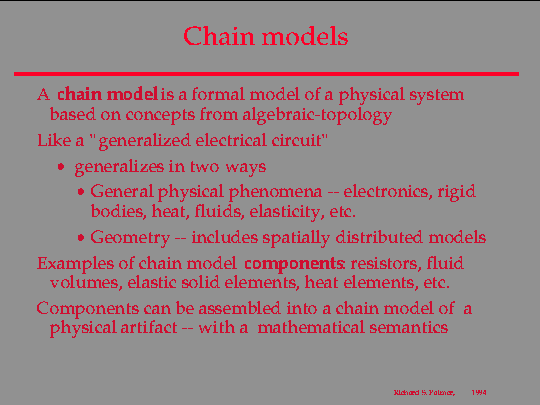
The language of physical elements is used to define the primitive components in a chain model. As an example, we could define a resistor, by defining the topological variables (1-chains in this case) that a resistor references (current and voltage) and the constraints on those (V = RI). Similarly, we can define a fluid element with 3-chains that represent the fluid in a region, and two chains that represent the fluid flux through surfaces in the region. Thus we may view the language of physical elements as a meta-language for defining models of physics. For instance, the language can define circuit theory, and simulators for circuit theory can be automatically constructed from the definition. The point is not to define circuit simulators, since we already have good ones. The point is rather to enable us to create simulators for other domains, and in particular to create multiple domain simulators, which we dont currently have, and which are currently difficult to create. However, simulation and analysis is only one application of chain models. Again by analogy to electrical circuits, we can see other important applications for a meta-language for specifying models of physics (Physical elements), and the theories it generates (Chain models).